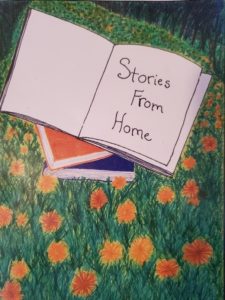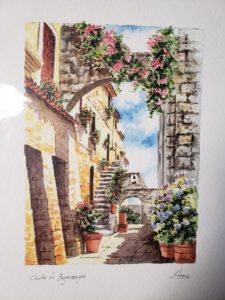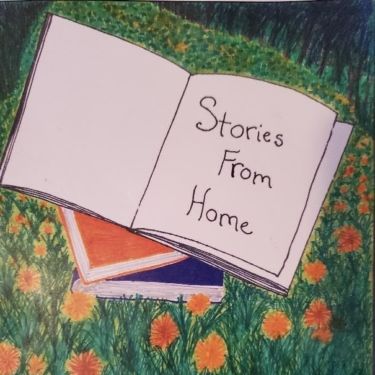Frequently our students come into the school system curious and eager to learn everything. Yet, as educators, in our excitement to share the world and our increased pressure to teach the curriculum, we drill our students with what “proper” responses look like. Consequently, we essentially put our students into a box without the room to question. We ask closed-ended questions and through our responses and redirections, inadvertently teach our students that there is a “right” way of doing things or a “right” answer rather than nudging them to search for meaningful clues. Paradoxically, we expect our students to have the problem-solving skills needed for math word problems, real-life problems, or critical thinking questions on assessments. We expect our students to find an unexpected solution or explain their thinking simply by looking at the situation around them.
I struggled with this phenomenon during my first few years of classroom teaching. I frequently asked myself, “Why won’t my students think for themselves?” or “How can I get my students to explain their thinking?” It was with these questions in mind that I began my journey with Visual Thinking Strategies (VTS). When I was introduced to this method, during one of my graduate-degree courses, I was cautiously intrigued. I had been down the road of “teach your students to do this and all your problems will be fixed” before and I was tired of leading my students down the wild goose chase of unfruitful methods. However, the philosophy of asking students to respond in unpredictable ways to visual aids fascinated me. Therefore, I decided that I would try implementing this strategy for my district’s standard intervention cycle of six to eight weeks.

Katherine Bishop, 2020. This artwork is the cover of a class book created during the 2020 COVID-19 pandemic. These stories were written by the students discussed in this essay and focused on using art to tell their stories.
VTS: What Is It?
VTS is the process of allowing students the opportunity to critically examine artwork and respond to it on both an emotional and cognitive level.1 VTS invites each student to use their own experiences to analyze any work of art they come across. Furthermore, this process allows a student to share their own opinions and respectfully challenge each other’s thoughts. VTS is an opportunity to ask students open-ended questions with no one right answer, supporting students to organically learn how to defend their thinking with critical thought and evidence.
Why Art?
With everything that a teacher is required to teach, you might be questioning why I encourage the study of art during my instructional time. You might be asking yourself, “If she is working on critical thinking, why is she adding a new topic rather than using the reading block already in place?” I asked myself the same question during my VTS journey. I found the answer to be in the question: I already had a reading block and I wasn’t seeing my students demonstrate strong critical thinking skills. Therefore, I knew I needed something different to help my students achieve these skills.
When a student gets to 2nd grade, they have already had years of reading blocks where closed-ended questions and answers have become habitual. Consequently, students have already formed patterns of how to answer read-aloud questions. Research has shown us that the longer someone performs a habit in a familiar setting, the stronger that link is.2 Thus, when looking at critical thinking skills, I can apply the same principle of forming new habits in unfamiliar settings. Therefore, by introducing something new, like art, there are no predetermined patterns; students are free to explore individually and collectively. Furthermore, I cannot expect my students to learn how to come to their own conclusions by continually redirecting them from a predictable question. By continually redirecting students’ responses, I am essentially telling them that they are answering the question incorrectly, which is the exact opposite of what I am trying to teach. Furthermore, as discussed in Marzano’s New Taxonomy, students’ approaches to learning are dependent on their motivation.3 By introducing a new method in unfamiliar territory, students can cautiously approach an exciting topic and experience activities that boost their self-efficacy. Therefore, to encourage students to develop their own thinking and to learn how to look critically, I decided to start with unfamiliar territory: art.
In order to actively engage in VTS, I felt it was imperative that my students understood that they had the freedom to experience, to question, and to wonder. They needed to know that there was no one right answer and that these conversations were truly a discussion with no preconceived ending; each student had to experience freedom and ownership in our conversations. What I discovered is that the teaching that happens when students are vulnerable to new discoveries is beautifully organic and purposeful.
As educators, we have the incredible privilege of having high-quality artwork at our fingertips through children’s picture books. Therefore, my students and I approached our interactive read-alouds as an opportunity to experience art work and learned about the craft of telling a story, giving equal weight to an illustrator’s role. As a result, students discovered that sometimes more information, or even a second story line, can be told in the illustrations. By continuing to use the VTS protocol within picture books, we can continue to give our students quality interactive read-alouds and allow our students to gain access to art without replacing our ELA blocks. Students can begin to wander through the illustrations while expanding their schema of the topic. Teachers can use VTS within our daily read-alouds, allowing our students the opportunities to develop the critical thinking skills we desire through organic conversations with no one right answer.
Picture Books: The Chance to Experience a Story
This phase of my VTS journey happened through my daily interactive read-alouds. Up to this point, I had not discovered the full impact that an interactive read-aloud of a picture book could have on my class. I knew that the illustrations helped to tell the story and added an aesthetic value to the book; however, I did not realize how much power art has.4 Moreover, I had never thought to spend time examining the dust jacket, cover, endpapers, and title page. I had never realized that as soon as I look at the cover of a book, the story has begun.
One of the first experiences that my class had with VTS of picture books was with The Scarecrow written by Beth Ferry and illustrated by the Fan Brothers.5 The dust jacket is a beautifully drawn scarecrow in an autumn field. However, when the dust jacket is removed, a textured cover resembling the scarecrow’s jeans is revealed. Surprisingly, the endpapers are simply green. Students spent several minutes discussing why the Fan Brothers would texture the cover and why the endpapers were just a plain olive green. After reading the book, students noticed that as the scarecrow was gaining friendship, his world was getting brighter (i.e. the shades in the illustrations were brighter). After that realization, the students went back to their original question: what do the dust jacket, cover, and endpapers mean? Our class’s conclusion was this book is the scarecrow’s personal story. The dust jacket pictured the scarecrow holding his arms out, inviting us into the story. The book’s cover was textured, reminding us of jeans: therefore, this story was thought to be inside his pockets—a memory of sorts. The endpapers were thought to resemble the grass turning into hay symbolizing the beginning of autumn that both began and ended the story.
Art Appreciation: The Chance to Experience Artwork
In the beginning of my VTS journey, one of my students had brought in a drawing that she had in her home. This artwork was special to the child because she knew the artist. This drawing was a close up of a spinning ride that one would find at a fair and pictured children riding it. The picture was drawn in a way that gave the audience a close view of several children, but had several other children blurred out; therefore, the viewers could in essence “feel” the drawing spin.
In accordance with the VTS process, I simply asked students “What’s going on in this picture?” I was amazed at the responses and connections that students gave. Most students had connected this picture to a field trip that we had taken the year before. Every student who shared their thoughts was able to tell me specifically how they “knew” this painting was at a carnival or that the ride was high off the ground. I was amazed at how carefully constructed students’ responses were. I also noticed how often they were looking at me to affirm their thinking. They were looking at me so often, that I moved to the back of the room to record their thoughts. This resulted in students taking more risks in their connections and beginning to build off their classmates’ responses.
After our initial VTS conversation, students were asking when we could look at more art. We have since named this time “art appreciation” and set aside 30 to 45 minutes once a week to look at a piece of art. We have looked at a variety of artworks: colored pencil drawings, acrylic paintings, watercolor paintings, and photographs. Some of these artworks have been brought in by students, some have been images that I have brought in, and others have been from the VTS curriculum.

Annio, Civita di Bagnozegio, n.d.
One of the images we analyzed was a watercolor painting that I had bought while studying abroad that depicted an Italian city (see included image). The connections that students made to this painting are worth noting. I expected my students to have a difficult time connecting to this picture because students did not have tangible experiences of what it depicted. However, I was wrong. While students did describe this painting as an “old city,” they also told me that they believed that it was from Europe. They remembered our discussions about castles and cobblestones the previous year. They also went on to discuss whether the city was abandoned because there were not any people in the painting. Each student gave a solid reason in support of their view. Moreover, students were actively agreeing and disagreeing with each other in a respectful way that built on one another’s knowledge, challenged their peers’ observations, and pointed to evidence in the painting. Throughout the conversation, students allowed themselves to be vulnerable to questions and many shifted their original opinions in response to their peers’ observations.
The Results
Throughout the process of implementing VTS in my classroom, I have noticed several changes. My students have become more thoughtful when reading or hearing stories. I have worked with this group of students for three years, second through fourth grade, and we had previously been struggling with answering comprehension questions. As a class, students struggled to empathize with characters or explain how they “knew the answer.” Since implementing VTS, my students have begun to explain their thinking, without prompting! Through the open-ended question and answer format my students feel empowered to explain their opinions and disagree with each other. Students are engaging in conversations about how color, style, organization, or scale make them feel and they are backing up their opinions with clear evidence. Moreover, my students have become more thoughtful artists and writers. They are taking the time to show movement in their own art and also taking the time to explain a situation in their writing.
Through my VTS journey, I realized that there is so much more to comprehension and critical thinking skills than I had originally thought. I realized that I can teach analytical skills organically through everyday conversations with art, that it is okay for my students and me to just let go, discover, and to wonder together. Utilizing VTS changed not only my attitude, but my students’ attitudes toward critical thinking exercises and provided an engaging opportunity to expand our vocabularies, defend our opinions, and learn analytical skills.
Questions or comments? Contact us.
Footnotes
- 1 - Philip Yenawine, Visual Thinking Strategies: Using Art to Deepen Learning Across School Disciplines (Cambridge, Mass: Harvard Education Press, 2013).
- 2 - Phillippa Lally, Cornelia H. van Jaarsveld, Henry W. Potts, and Jane Wardle. “How Are Habits Formed: Modelling Habit Formation in the Real World.” European Journal of Social Psychology 40, no. 6 (2009): 998–1009. https://doi.org/10.1002/ejsp.674.
- 3 - “Marzano’s New Taxonomy.” Intel Teach Program: Designing Effective Projects. Published 2012. https://www.intel.com/content/dam/www/program/education/us/en/documents/project-design/skills/marzano-taxonomy.pdf
- 4 - Lawrence R. Sipe and P. David Pearson. Storytime: Young Children's Literary Understanding in the Classroom. (New York: Teachers College Press, 2008).
- 5 - Beth Ferry and Fan Brothers (Illustrators). The Scarecrow. (New York: Harper Collins, 2019).

